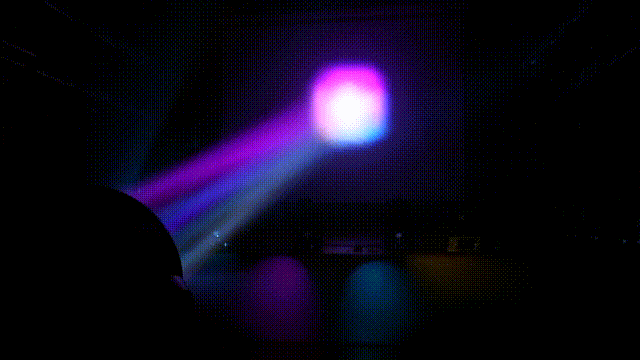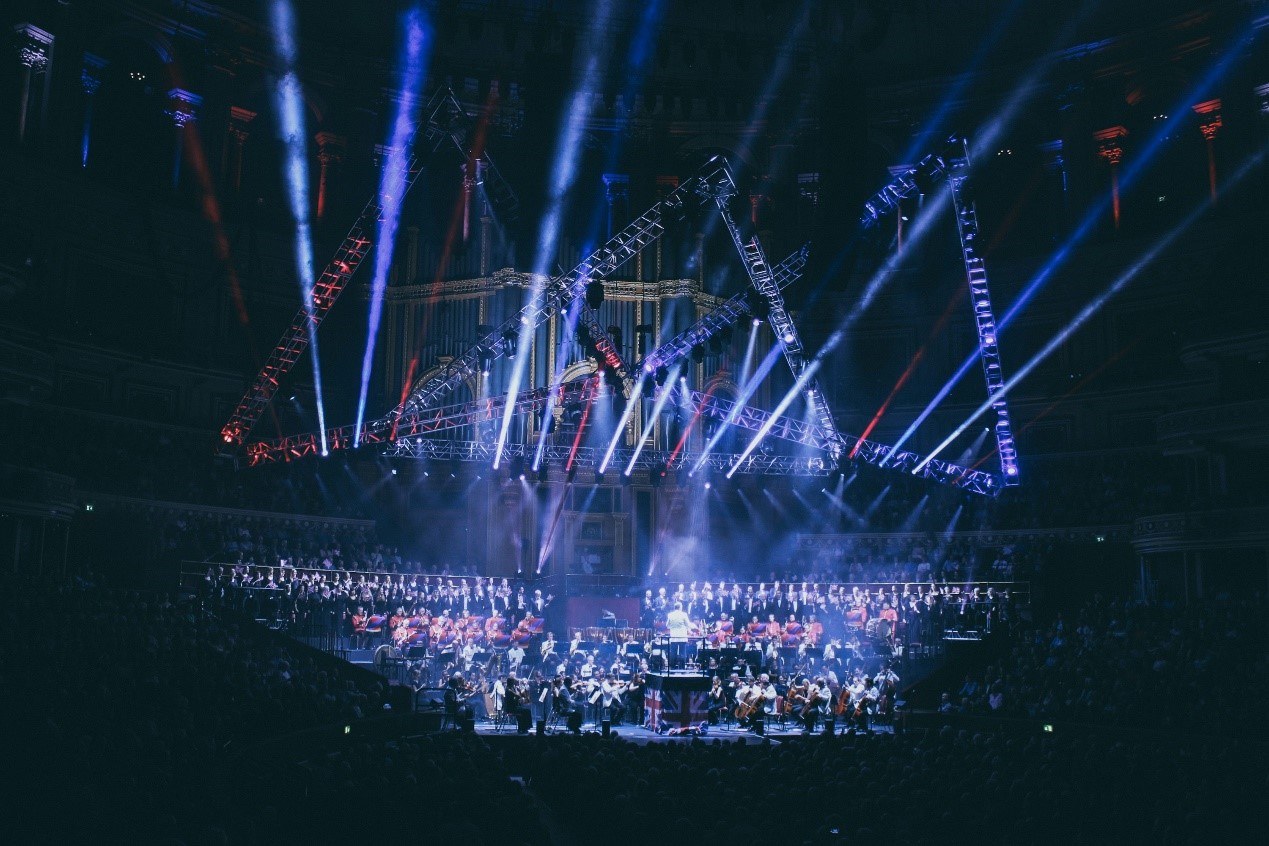How to Improve LED Stage Light Performance: About Photochromism
In stage performances, lighting design plays a critical role in enhancing artistic expression, mood, and overall impact. Successful lighting setups can evoke strong emotional responses, define characters, and intensify the storytelling.
However, the evolution to today’s LED stage light has been through a long history, from flame to moving head beam and spot. To explore the extreme of the stage aesthetic effect, we have been pushing the boundaries of the stage lighting gadgets and fixtures and the principles and tips to enhance the LED stage lighting performance.
This guide will delve into the essential aspects of stage lighting – photochromism, for contractors, designers, and manufacturers aiming to create standout designs that complement the performance.
The History of Stage Lighting Development
The development of stage lighting has a rich history that reflects advancements in both technology and performance needs. In the 16th century, outdoor night performances in Europe relied on makeshift light sources, such as bonfires made from resin-soaked ropes. These rudimentary methods were the first step toward creating a theatrical atmosphere after dark.
By 1755, significant progress had been made. During an opera performance in Dresden, 8,000 candles were lit to illuminate the stage. This is the spectacle that emphasized the growing importance of lighting in creating visual effects. In the 18th century, a new convention emerged: extinguishing the house lights and focusing the audience’s attention solely on the stage lighting.
The 20th century brought revolutionary changes. The invention of tungsten filament light bulbs provided focused beams through spotlights, allowing for better control of stage ambiance and spatial effects. This laid the foundation for more sophisticated lighting designs in theatres, film sets, and broadcast studios.
In the 1950s and 1960s, the introduction of LED stage lights began to transform the industry. Early LEDs emitted red light, but over the next three decades, they developed into the versatile, colorful lights we recognize today.
By the 2000s, LED stage lights had become a dominant feature of modern theatre lighting fixtures, offering energy efficiency, vivid colors, and flexibility that continue to shape performances globally.
The Rise of LED Stage Lights
To answer the question of why is LED type has evolved, we can first take a look at the challenges and dissatisfaction of the previous types of stage lighting.
Challenges of Traditional Stage Lighting
Traditional stage lighting, such as tungsten halogen or xenon lamps, faces significant challenges.
One of the primary issues is heat dissipation—tungsten lamps convert much of their energy into heat, resulting in poor energy efficiency. This excessive heat can lead to safety risks and shorten the lifespan of the equipment.
On top of that, achieving the desired color tones requires the use of color filters in front of the light sources. These filters absorb specific wavelengths of light, reducing overall brightness and complicating color control, leading to inefficient and costly operations.
Shift to LED Stage Lights – What’s the Advantages?
One of the main benefits is the energy efficiency. Unlike traditional lamps, LEDs convert a significant portion of electrical energy into light rather than heat, allowing for longer operation times without overheating.
However, LEDs lack the continuous light spectrum that traditional sources like tungsten lamps offer. This is because white LEDs typically rely on a combination of blue LEDs and yellow phosphors, leading to imbalances in color rendering.
In the early days of LED stage lighting, there was widespread dissatisfaction due to poor color rendering.
These early LEDs had an overabundance of blue light and lacked red content. That the colors appear unnatural and fail to meet the artistic demands of stage lighting. It turns out to be more than worse when the lights attempt to mimic the warmth and richness of traditional tungsten sources.
Advanced LED Stage Lighting Technologies
Modern advancements in LED technology have addressed many of the initial shortcomings.
RGBW Technology
By incorporating red, green, blue, and white (RGBW) LEDs into stage lights, color mixing becomes much more precise. The addition of a white LED enhances color accuracy, especially for neutral tones, creating a richer and more natural light spectrum.
LED Cooling and Optics Designs
High-power LEDs face the issue of thermal management, as excessive heat can degrade the light output and shorten the LED’s lifespan. To fix that, modern LED fixtures use advanced cooling designs such as heat pipes, aluminum fins, and silent axial fans to dissipate heat more effectively. This ensures consistent light quality while preserving the integrity of the LED chips.
Besides, secondary optics are utilized to shape and control the light beam, optimizing the light’s distribution for specific stage applications, such as spotlights or wash lights.
PWM and RGBW Color Mixing Algorithms
Pulse Width Modulation (PWM), combined with sophisticated color mixing algorithms, allows for precise control of color temperature and light intensity. By adjusting the duty cycle of the red, green, blue, and white LEDs, PWM ensures stable color reproduction across different brightness levels without noticeable flickering or shifts in color temperature.
The algorithms behind RGBW mixing ensure that even when creating white light, the color rendering remains balanced, compensating for gaps in the light spectrum and achieving a high color rendering index (CRI), essential for accurate stage lighting.
The Artistic Concept of Light and Color
Light and color in stage lighting are more than technical aspects; they are artistic tools. The use of various lighting hues is essential for building atmospheres and enhancing emotional depth. Effective lighting choices amplify both the performer’s emotions and the audience’s engagement. Stage lighting experts must skillfully blend colors to complement the scenery, costumes, and mood of each scene, creating a cohesive visual experience.
The Principle of “One Dominant Color”
Stage lighting must follow the principle of “one dominant color, others to complement.”
For each scene, there should be a clear, dominant color that aligns with the emotional tone of the performance. Complementary colors are layered to enhance this effect, ensuring that the visual tone remains consistent with the performance’s narrative.
For instance, in a desert-themed scene, warm yellows may dominate to mimic sunlight, while cooler blue backdrops enhance spatial depth and ambiance. This technique helps the audience immerse in the performance while providing clarity of focus on the action.
Emphasising Contrast through Light and Color
The contrast in lighting design is vital for creating dynamic visuals. Designers often use contrasting techniques like light versus shadow, warm versus cool hues, or large versus small illuminated areas to heighten dramatic tension.
For instance, using a bold red light in conjunction with soft yellow highlights can create visual depth and intensity in dance performances. This contrast not only adds visual interest but also helps convey deeper meanings, like resilience or emotional turmoil, through color symbolism.
The Importance of Variations in Light and Color
Stage lighting should never remain static. It is crucial to introduce variations, such as shifts between bright and dim lighting or alternating warm and cool tones, to reflect changes in the narrative.
This dynamic use of light ensures that the performance maintains a rhythm that matches the emotional and thematic arcs of the story. Effective control over light intensity and color gradients helps important moments in performance and underscores character development.
Harmony in Light and Color Design
While contrast and variation are important, maintaining harmony between the light, color, and overall stage setting is key. Designers must ensure that lighting does not overwhelm the audience, causing visual fatigue. The balance between subtle color changes and bold lighting effects should enhance, rather than detract from, the performance.
For manufacturers and designers working together, this balance should be a critical consideration when developing new lighting systems for stage settings.

Conclusion
Stage lighting is an intricate craft that combines technical precision with artistic flair. The strategic use of light and color can elevate a stage performance, making it more engaging for the audience.
Light Sky has been deeply rooted in the stage lighting industry for decades, with patented design and technology adopted to provide more durable light fixtures that generate magical visual effects. We have provided comprehensive lighting solutions for projects, be it DJ and wedding settings, outdoor indoor concerts, or theater designs. Our custom solutions will empower your projects.
For more relevant contents, you can click here
Stage Lighting Effects 101: What are Gobos in Lighting?










